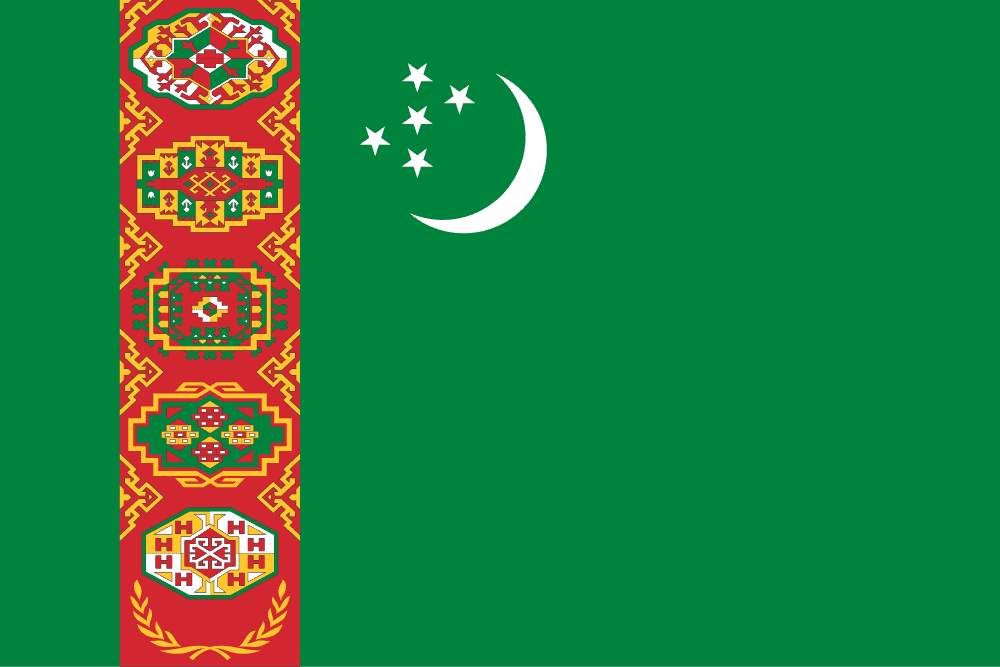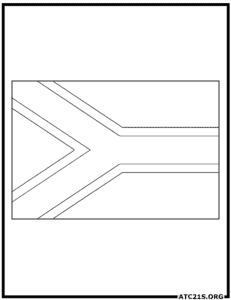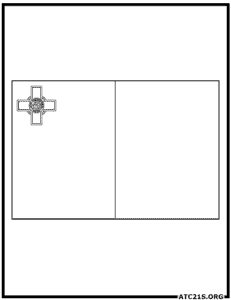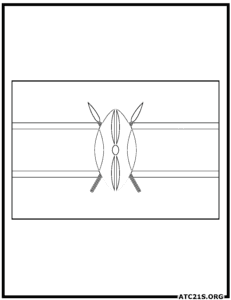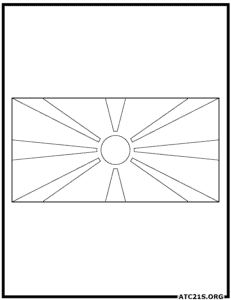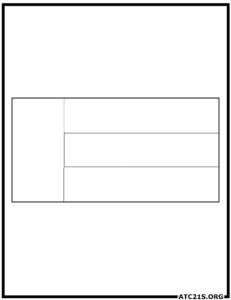Turkmenistan Flag Coloring Page Download
Turkmenistan Flag Description
The flag of Turkmenistan consists of a green field with a vertical stripe of five carpet designs on the hoist side. The carpet designs are arranged in a column, with two red stripes on the top and bottom, a white stripe in the middle, and two narrow green stripes separating them. The carpet designs represent the traditional art of Turkmenistan and are symbolic of the country’s rich cultural heritage.
The green field represents Islam, which is the predominant religion in Turkmenistan. Green is considered a sacred color in Islam and is often associated with paradise. The five carpet designs on the hoist side are a significant aspect of Turkmen culture and are known as “guls.” These guls are traditional motifs used in Turkmen carpets and are highly valued for their intricate patterns and vibrant colors.
The red stripes on the top and bottom of the carpet column symbolize bravery and courage, while the white stripe in the middle represents purity and peace. The narrow green stripes separating the red and white stripes symbolize fertility and prosperity.
The flag of Turkmenistan was officially adopted on February 19, 1992, after the country gained independence from the Soviet Union. However, the design of the flag has roots in Turkmenistan’s history and culture. The carpet designs on the flag are inspired by the ancient Turkmen carpets, which have been woven by Turkmen tribes for centuries.
Turkmenistan has a long tradition of carpet weaving, and the art of carpet making holds great significance in the country’s cultural identity. The guls depicted on the flag are not only decorative but also carry symbolic meanings. Each gul design represents a specific tribe or region within Turkmenistan, showcasing the diversity and unity of the Turkmen people.
The flag of Turkmenistan is a powerful symbol of the country’s heritage, traditions, and national identity. It reflects the importance of art, craftsmanship, and cultural values in Turkmen society.


